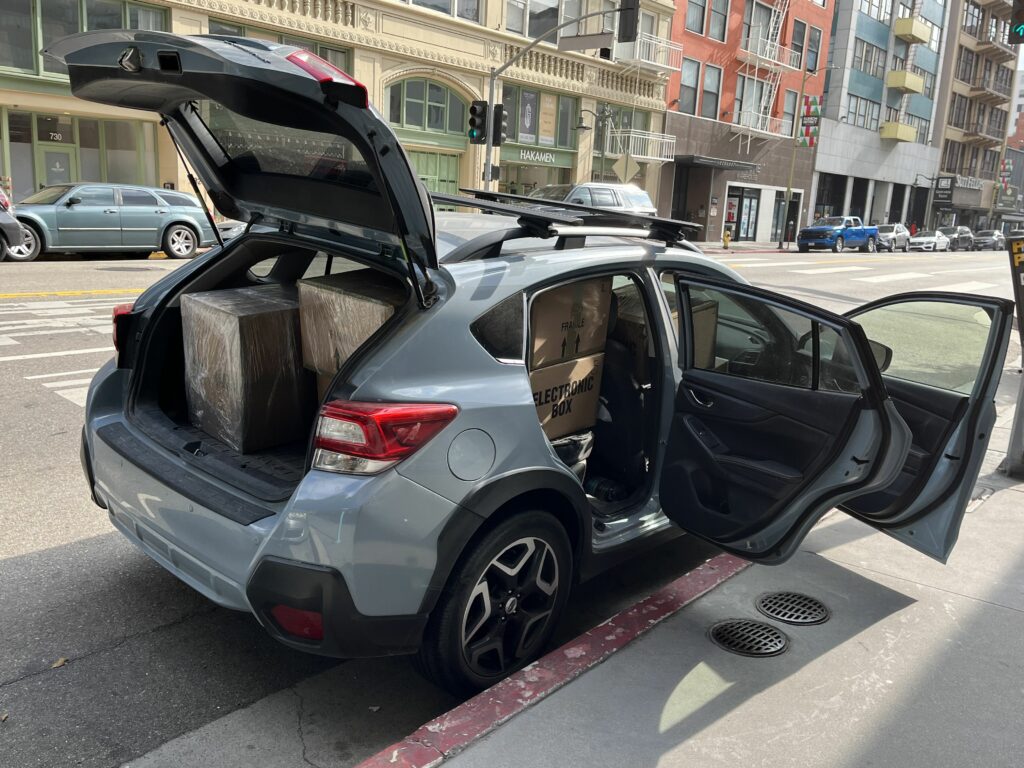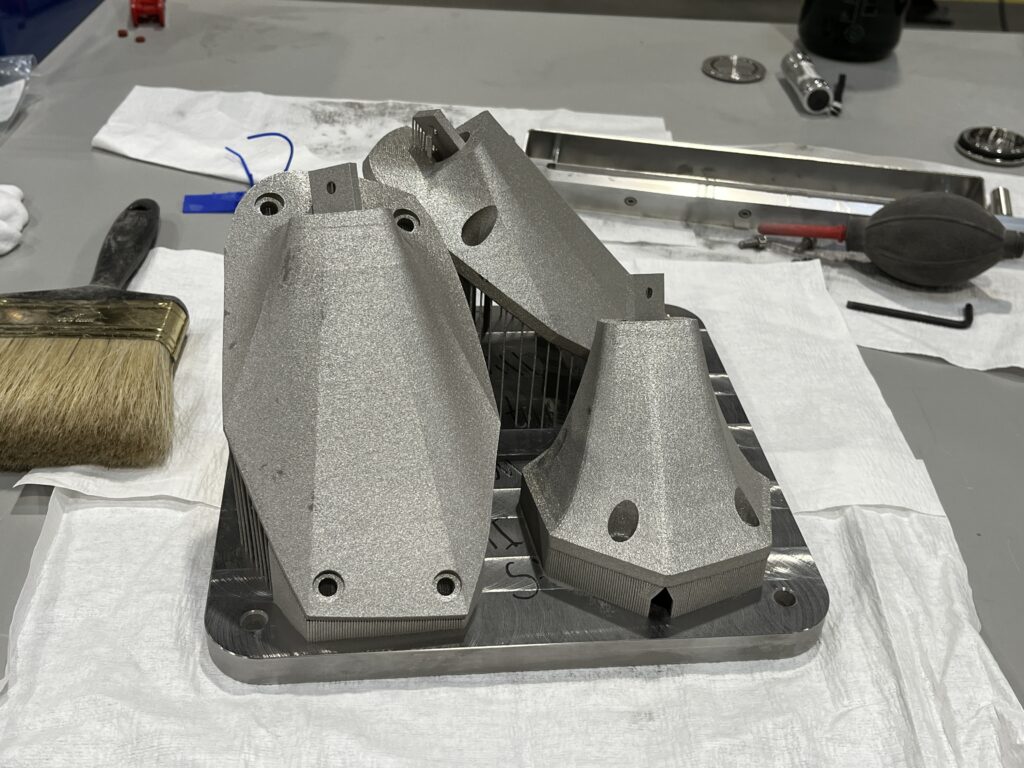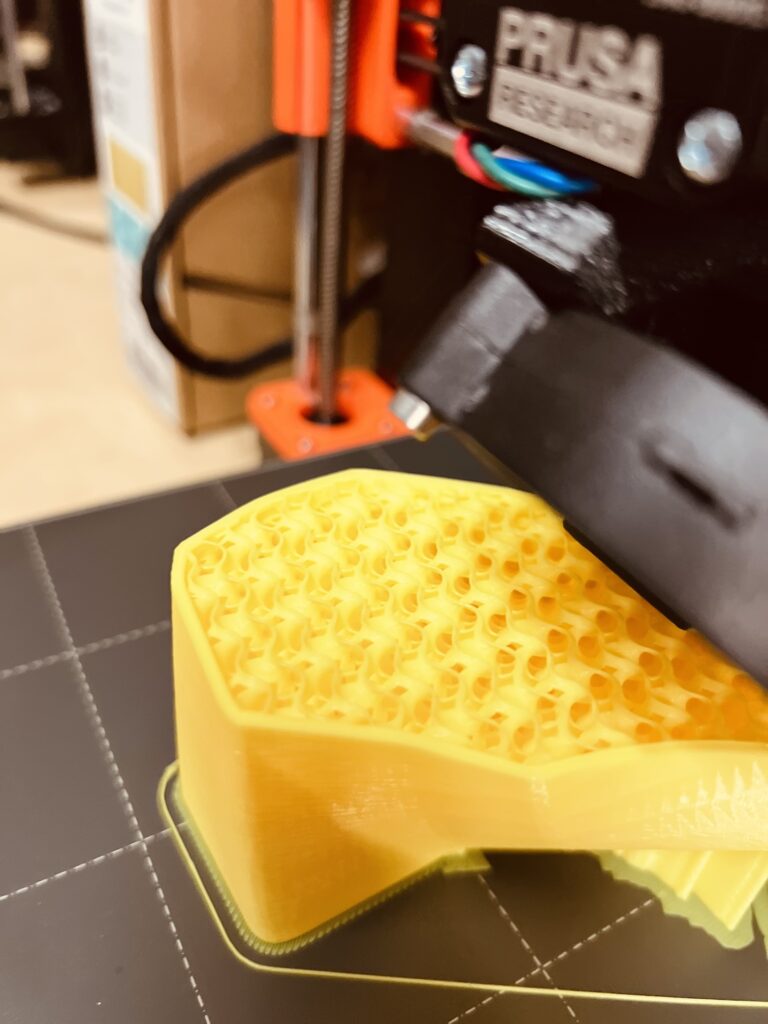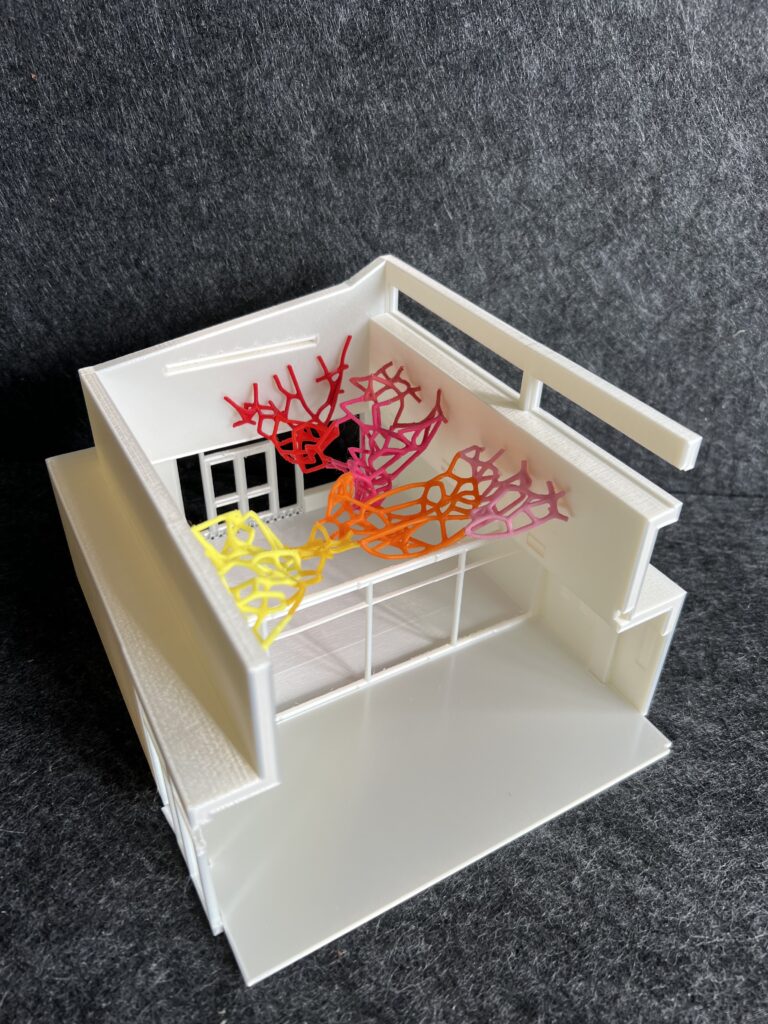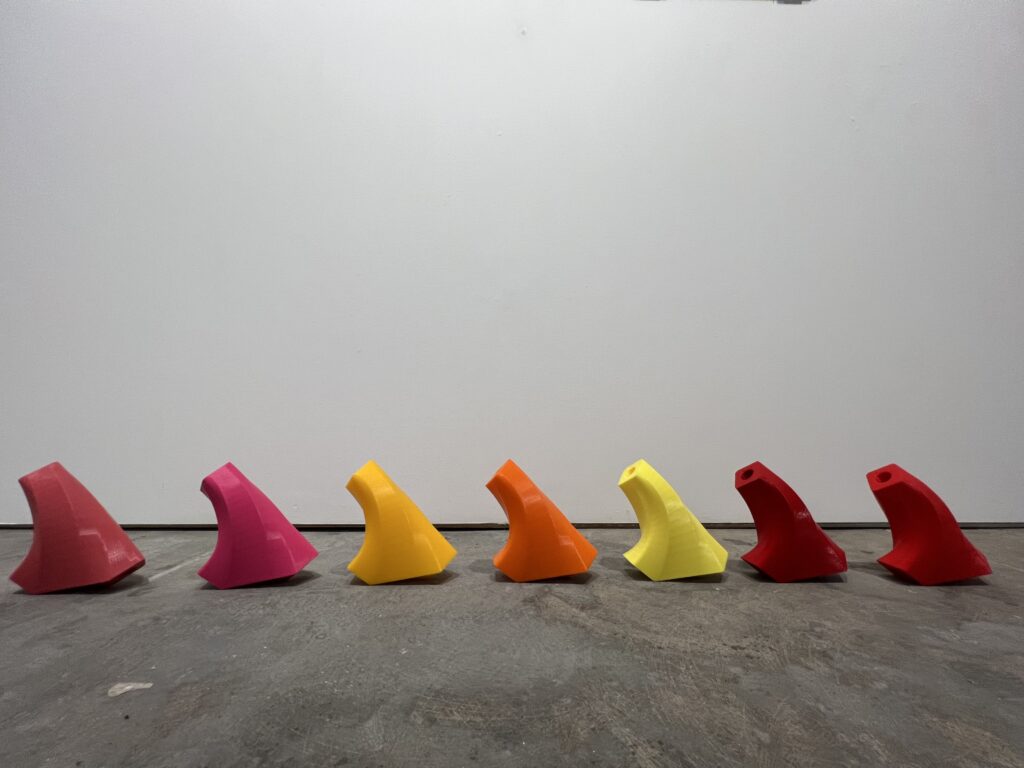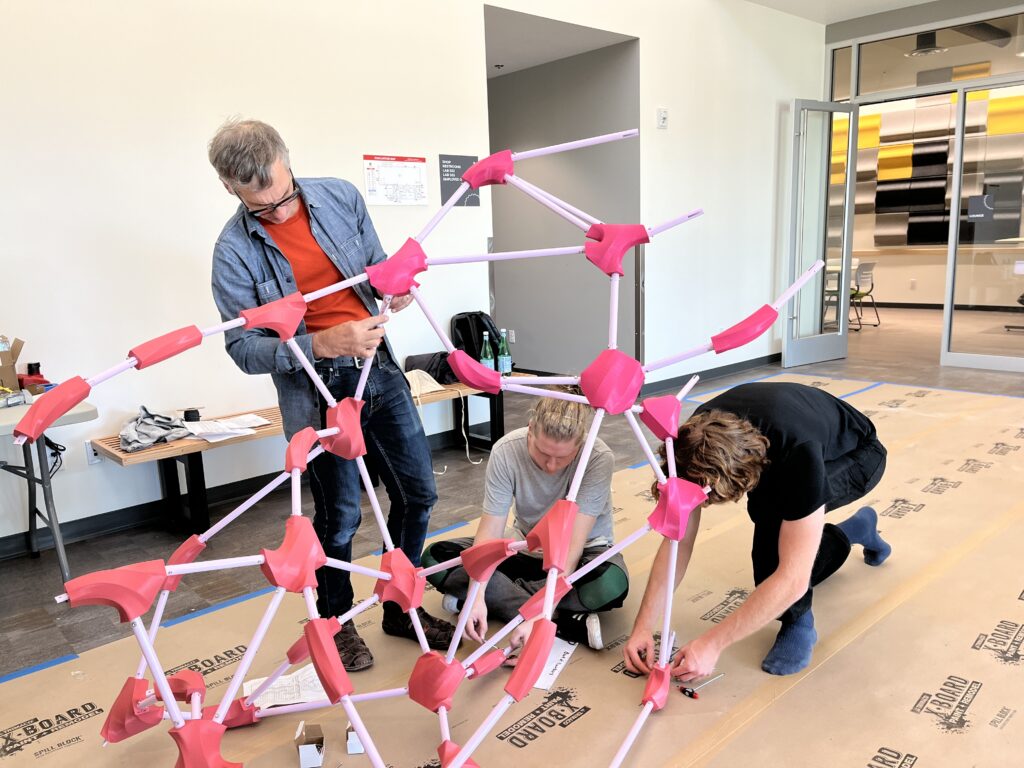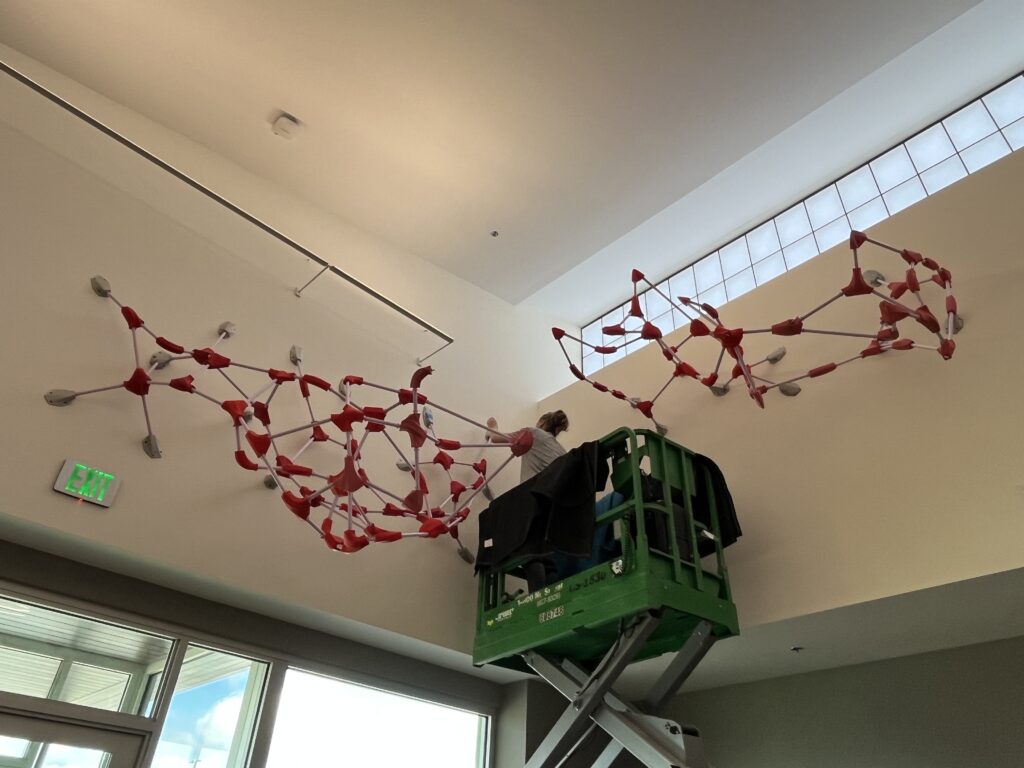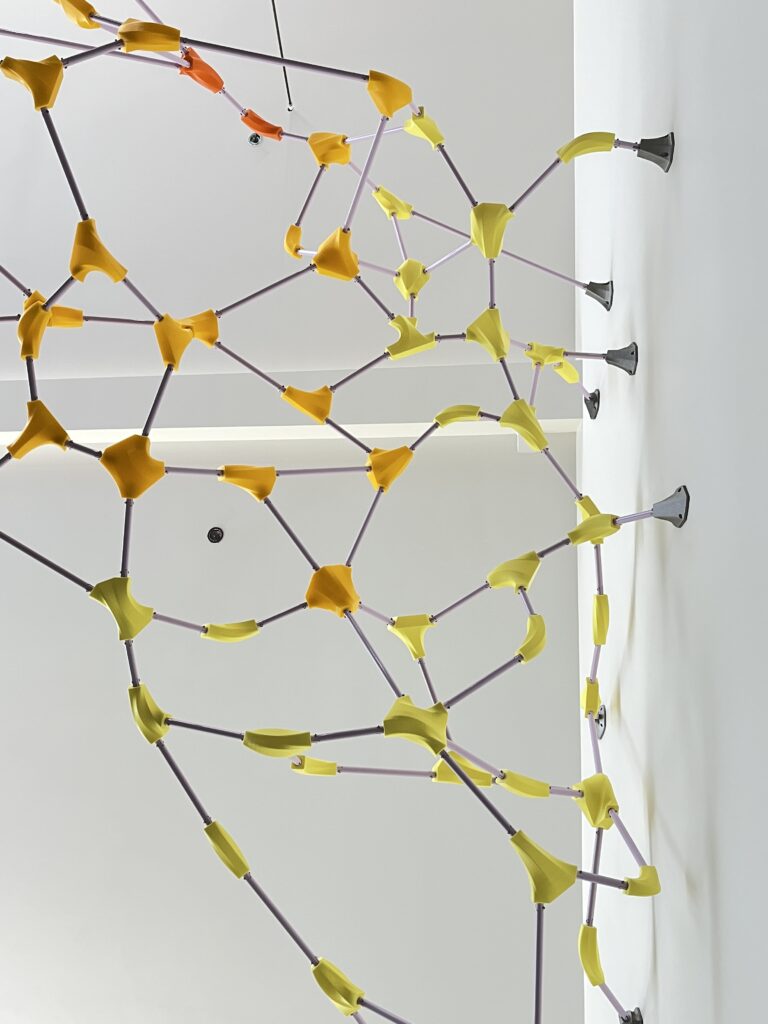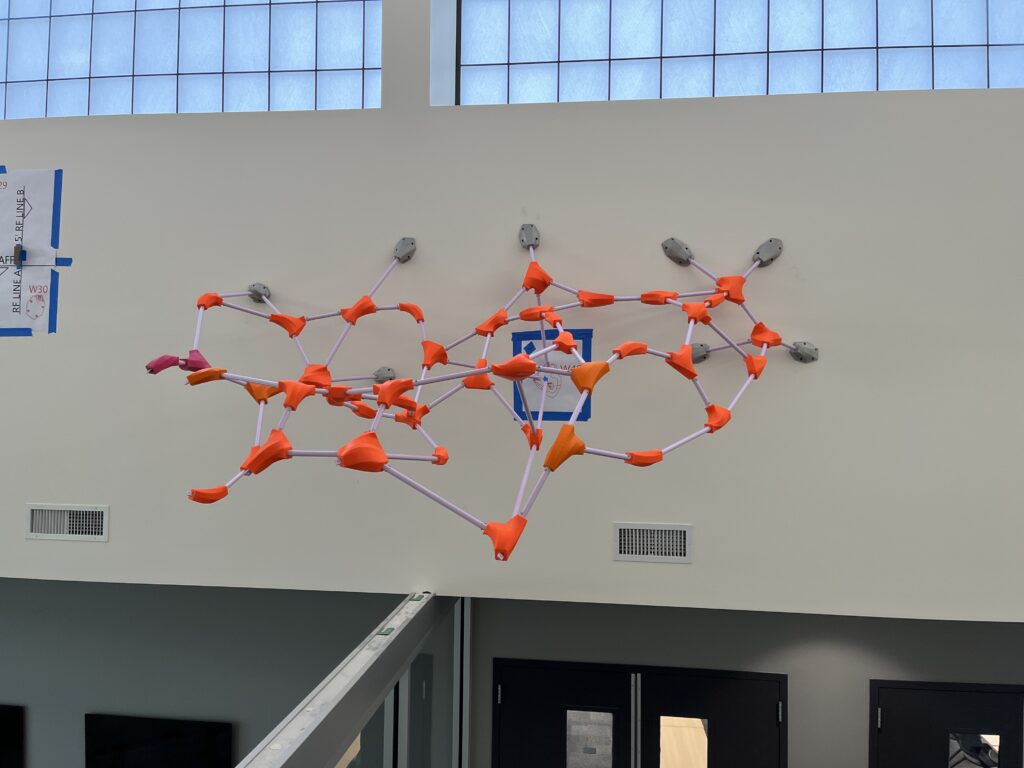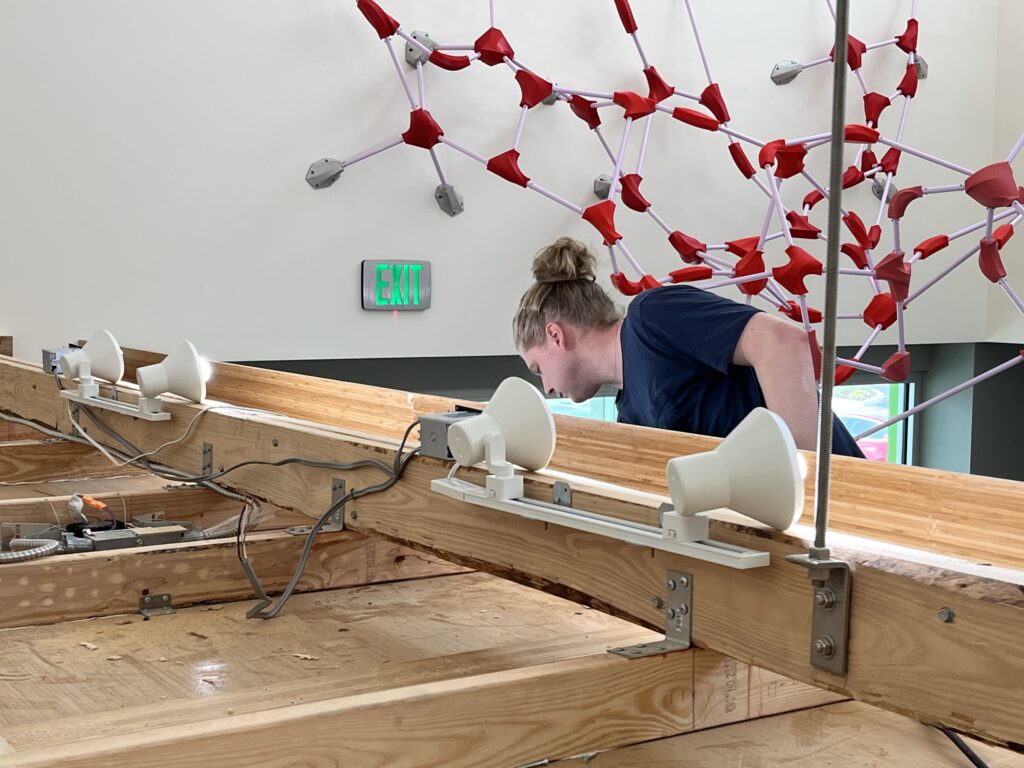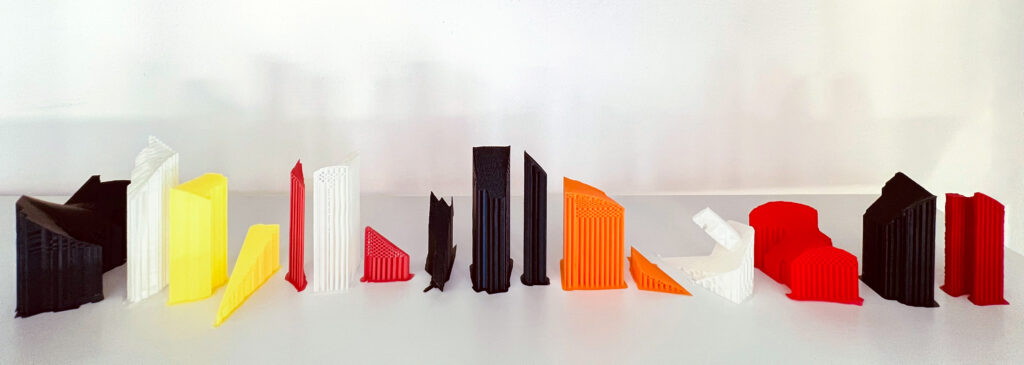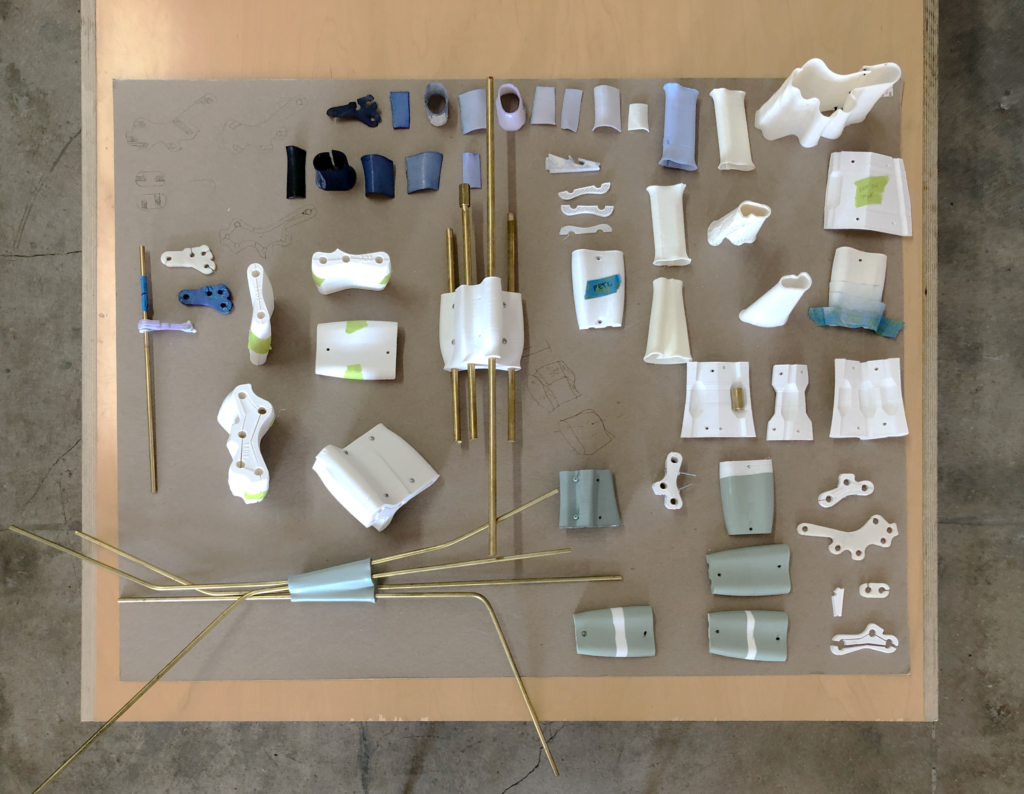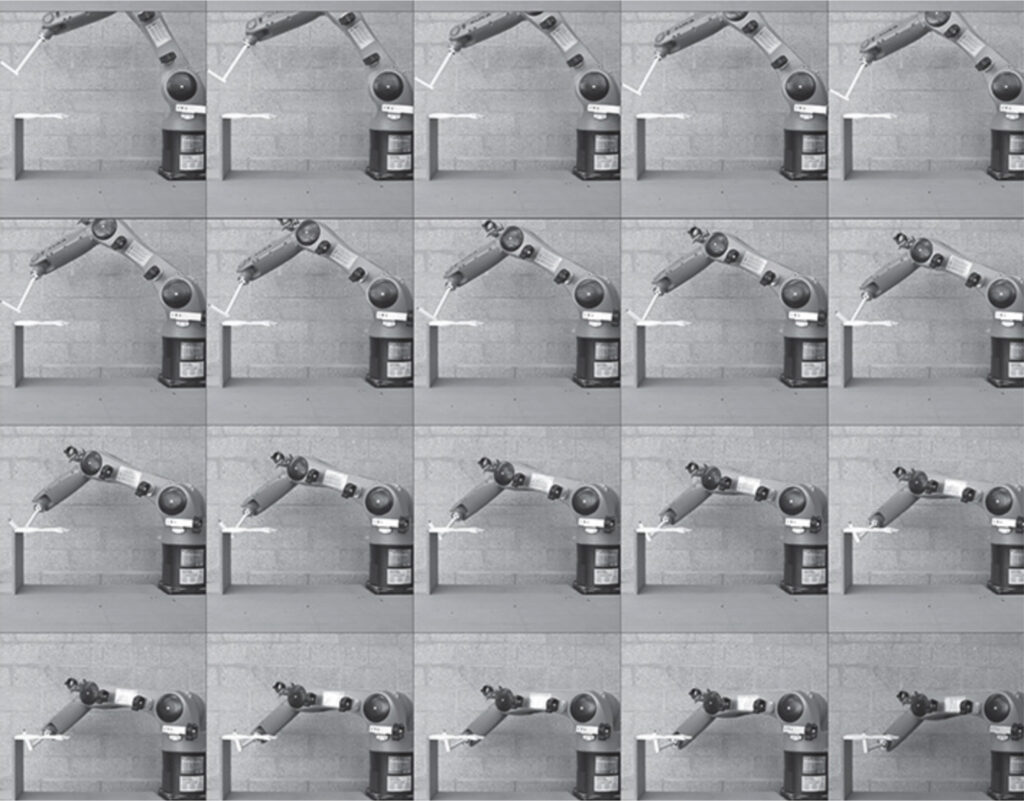Continuing prior research into line and node based spatial systems (see: Entangled Agency; Intersectionality), Rhizomatic Lilac Fizz further investigates the line-node connection as compositional system as well as proposes a novel structural system. The permanent installation connects to three walls, spanning 20’x30’ in plan with no additional support. It is composed of 330 3D printed joints (nodes) and 550 aluminum tubes (lines).
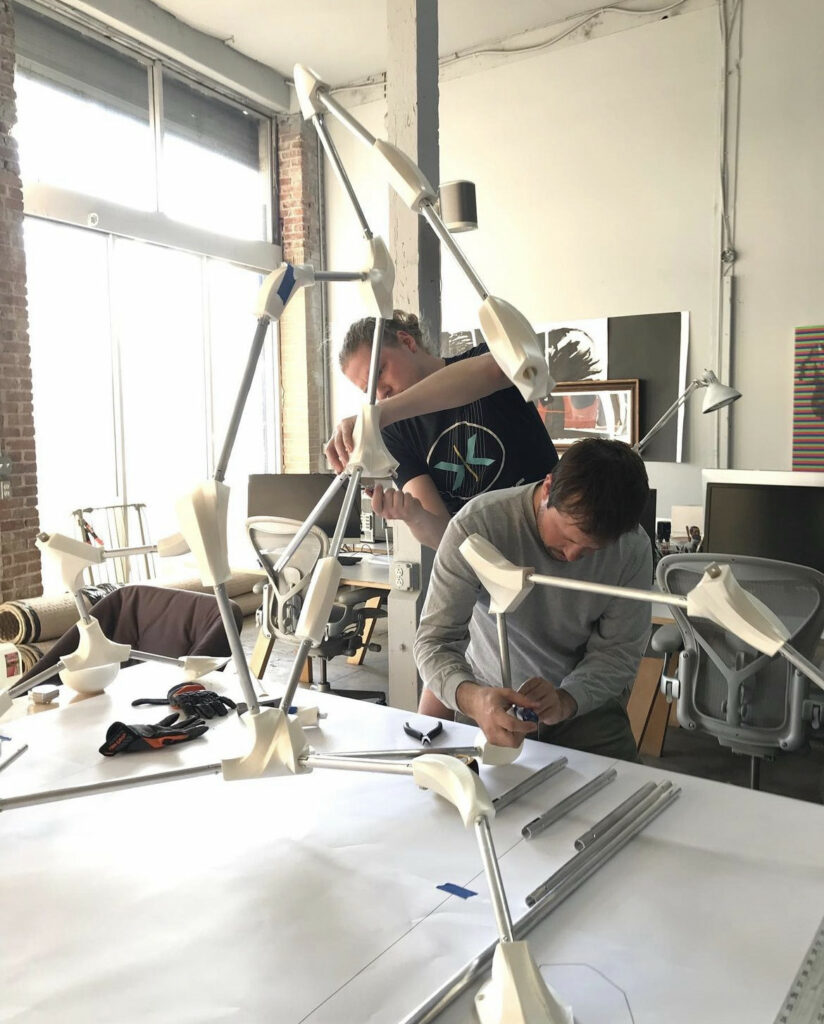
As opposed to Entangled Agency where the brass rods are continuous and pass through the 3D printed joints, in RLF the aluminum tubes are interrupted by the 3D printed parts. This required the plastic parts to serve a truly structural role. Structural analysis was done to understand the properties of the printed parts, determine the appropriate amount of infill structure required, and gain an understanding of the composite properties of the system as a whole. We selected a portion of the sculpture and made a 1:1 scale prototype to test the system further (see image above).
The sculpture is a space frame-like topological structure where the tubes have lengths of whole inch increments to simplify assembly and fabrication. Each node is a unique 3D printed geometry that can grow or shrink to solve for the adjusted tube lengths in the network topology. At each connection point on the nodes, useful information is printed into the surface to aid in assembly including the node ID, connecting tube length, and the ID of the node at the opposite end of the tube. The sculpture has only one possible configuration and was assembled without the use of any drawings or models.
Commissioned for the Oregon Manufacturing Innovation Center’s new Additive Manufacturing Building, we partnered with the client and were afforded use of their stainless-steel 3D printers. All 40 of the wall attachment nodes are printed out of stainless steel and provide a rigid connection, transferring any forces into the structure of the building.
All plastic nodes were printed in our Downtown LA studio and the aluminum tubes were fabricated and powder coated locally. All parts were flat packed and shipped to Oregon prior to assembly, the entire sculpture fit in the back of a Subaru!
Thank you to the Oregon Arts Commission and Oregon Manufacturing Innovation Center for supporting this research.
